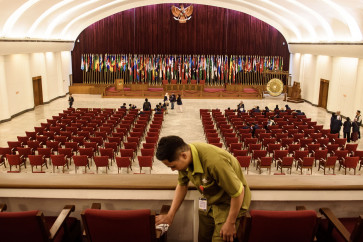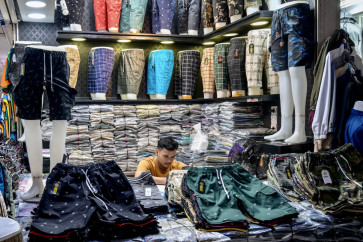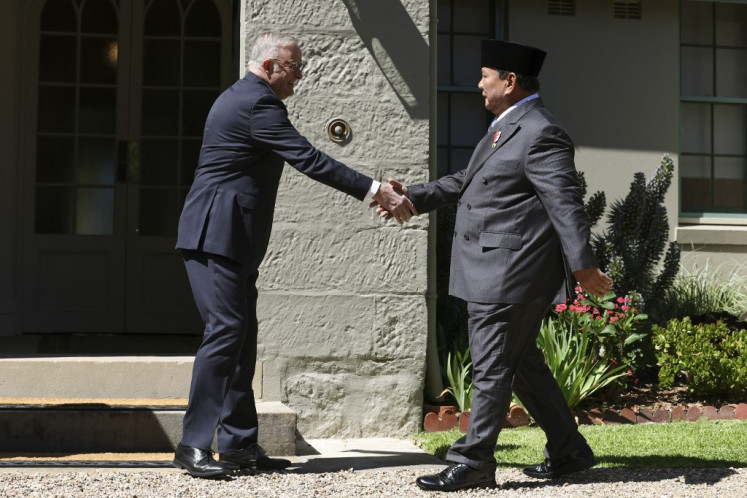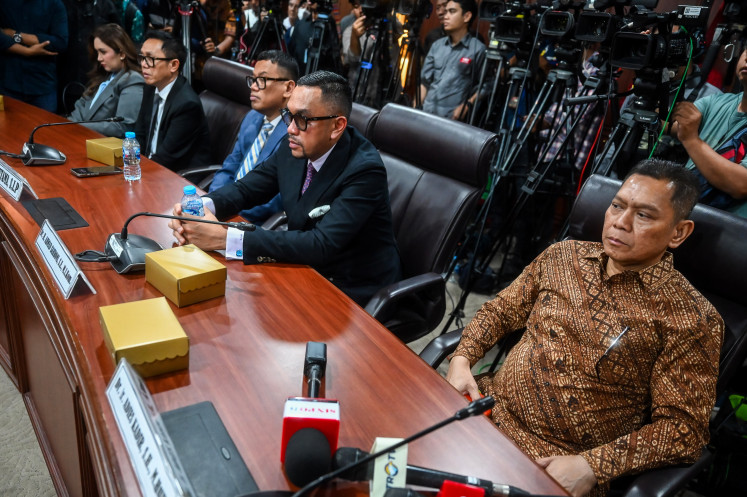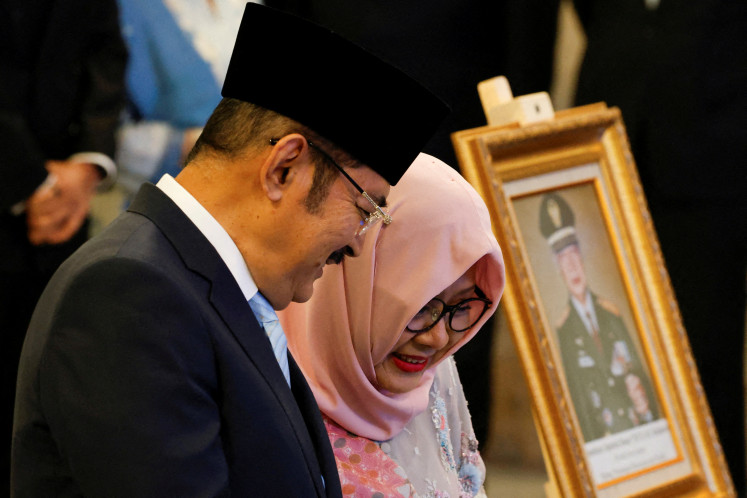Popular Reads
Top Results
Can't find what you're looking for?
View all search resultsPopular Reads
Top Results
Can't find what you're looking for?
View all search resultsThe birthplace of Balinese Hinduism
The ancient text Siwa Purana states that the Samuantiga temple was built during the reign of King Candrasangka, in ancient Bali
Change text size
Gift Premium Articles
to Anyone
T
he ancient text Siwa Purana states that the Samuantiga temple was built during the reign of King Candrasangka, in ancient Bali.
Curiously, Candrasangka was never mentioned in any existing inscriptions issued from ancient kingdoms here.
Several scholars believed Candrasangka was the alias of Chandrabhayasingha Warmadewa, a 10th century king whose palace lied in Bedahulu, known as Bedulu today.
The temple rose to prominence in the 11th century during the reign of King Udayana Warmadewa after a large gathering of senior ranking government officials led by Mpu Kuturan, leaders from different religious sects and representatives from Bali Aga (indigenous Balinese) communities, took place.
This three-party meeting gave rise to the name Samuantiga (literally the gathering of the three).
Scholars haven’t yet unearthed the reasons behind this large gathering. Some say the king wanted to establish a religious policy that would accommodate different religious schools, including the aboriginal belief of the Bali Aga. Other believed the king called for the meeting to defuse the mounting tension between feuding Hindu sects.
According to R. Goris, nine Hindu sects existed in ancient Bali, namely Pasupata, Bhairawa, Siwa Shidanta, Waisnawa, Bodha, Brahma, Resi, Sora and Ganapatya. Each sect revered a specific deity as its personal Godhead.
It was said these sects competed with each other to be the dominant one, trying to make their respective godhead the ultimate deity of the island. At the same time, the Bali Aga were seeking to protect their belief system, including their adoration of deities in mountains, jungles and rivers.
While the real reason behind the meeting might still be shrouded in mystery, the results of the gathering have survived the test of time.
Under the wise counsel of Mpu Kuturan, the gathering gave birth to a belief system later known as Balinese Hinduism.
The participants agreed to amalgamate the principles and teachings of their sects and belief systems into a single philosophical and ritualistic entity focusing on three Godheads; Brahma, Wisnu and Siwa.
The pantheon, rituals, offerings, and cosmology of this “new” religion incorporates the main elements of every sect as well as the Bali Aga belief system, providing an acceptable solution for all participants, a peace of mind for the king and a permanent place for Mpu Kuturan in the annals of the island.
In the gathering, the participants also agreed to organize the island’s communities into desa pekraman (customary village), an autonomous socio-cultural and religious congregation which has emerged as a very powerful entity in modern Bali. As of 2011, the island has around 1,500 desa pekraman.
“The gathering taught us one important lesson; that a difference so deeply ingrained, such as in the matter of religious belief, could be resolved in a peaceful and elegant manner as long as every party involved was willing to sit together, reason with each other and find middle ground,” law professor I Wayan P Windia said.
Contemporary Bali and Indonesia, Windia noted, could learn a precious lesson from Samuantiga to cope with increasing inter-communal conflicts and religious intolerance.
— Luh De Suriyani and I Wayan Juniarta


